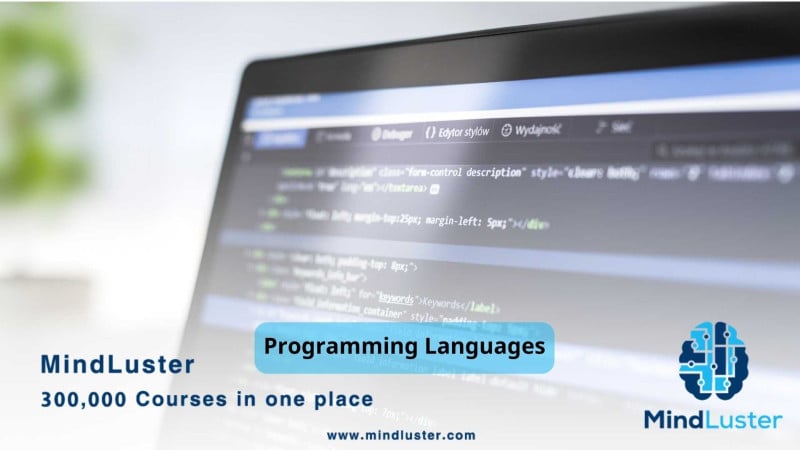Excelling as a programmer is not easy, but it is worth it. The process includes continuous progress and increasing one's knowledge. From learning the basics to diving more deeply into some advanced programming techniques, the journey will be enjoyable and full of nourishment.
When you hear the word programming languages, you think of names such as Python, JaveScript, etc. But in this article, we will discuss the languages mentioned and the categories they fall into, so keep reading to learn how to start a shining career as a programmer.
Programming languages Types
Procedural Programming Languages
They are languages derived from structured programming based on the concept of calling procedures. Procedures, also known as routines, subroutines, or functions, consist of a series of computational steps to be carried out. While executing a program, any given procedure might be called at any point, including by other procedures or itself.
Examples of procedural programming languages include C, which is known for its efficiency and control and is widely used in system programming, embedded systems, and operating system development. Pascal, which was historically used for teaching programming concepts and for growth in the education sector, is also included.
The benefits of procedural Programming Languages are simplicity, as they are easy to understand and implement, making them ideal for beginners, and Efficiency, as they provide a low level of access to memory and system processes, which can result in faster execution times. Procedural Programming Languages are used widely in System and application software, game development, and real-time systems.
Object-Oriented Programming Languages
They are programming languages built around the concept of “objects,” which can be data structures, functions, or methods. Object-Oriented Programming Languages highlight reusability, scalability, and efficiency.
Java is an example of an Object-Oriented Programming Language. It is platform-independent and widely used in web applications, enterprise software, and Android app development. Additionally, one of the most famous Object-Oriented Programming Languages is Python. It is well known for its simplicity and readability and is mainly used in web development, data science, and automation. Object-Oriented Programming Languages have many benefits, including Modularity, reusability, and scalability. Its use cases vary between software development, game development, and user interface design.
Functional Programming Languages
They emphasize the evaluation of functions and avoid mutable data as well as changing states. This paradigm is based on mathematical functions and aims to produce more predictable and bug-free code. An example of a Functional Programming language is Haskell, which is well known for its static solid typing and lazy evaluation.
The Haskell language is used in academia and for complex mathematical computations. Also, one of the famous Functional Programming Languages is Scala, which combines functional and object-oriented programming. It is widely used in data processing and distributed computing.
Functional Programming Languages have many benefits, including immutability, as data does not change state, reducing bugs and side effects. They also have concurrency, as it is easier to write parallel and concurrent programs. Additionally, Functional Programming Languages are characterized by modularity, as their functions can be composed to build complex operations.
Scripting Languages
Typically used for automating tasks and writing quick programs, Scripting languages are often interpreted rather than compiled, making them useful for rapid development and testing. Scripting Languages include JavaScript and PHP.
The most famous benefits of Scripting Languages are ease of use, flexibility, and interactivity. They are commonly used in web development, automation scripts, and system administration.
Logic Programming Languages
Programs written in logic programming languages express logic more than computation. They are based on formal logic and used to solve complex problems through the use of facts and rules. Examples of Logic Programming Languages are Prolog, which is used mainly in artificial intelligence, computational linguistics, and theorem proving.
The famous benefit of logic programming languages is their declarative nature, which focuses on the 'what' rather than the 'how,' simplifying problem-solving in addition to AI and Natural Language Processing. It is suitable for tasks that involve pattern matching and symbolic reasoning. Logic Programming Languages are widely used in Artificial intelligence, Expert Systems, and Natural language processing.
Concurrent Programming Languages
Designed to support multiple processes running simultaneously, Concurrent Programming Languages handle the execution of concurrent computations by allowing various tasks to be performed in overlapping periods.
Examples of concurrent programming languages include Erlang, which is designed to build concurrent and distributed systems. Erlang is mainly used in telecommunications and messaging systems. Also, one of the well-known Concurrent Programming Languages is Go, developed by Google, it simplifies concurrency with goroutines and channels.
The famous benefits of Concurrent Programming Languages are efficiency, which has improved performance through parallel task execution, and scalability, which makes them suitable for building scalable systems that can handle multiple users and processes.
Concurrent Programming Languages are widely used in Real-time systems, distributed computing, and web servers.
Data-Oriented Programming Languages
Data-oriented programming languages, which are tailored for the efficient handling and processing of large datasets, are often used in statistical analysis, data mining, and extensive data applications. Examples of Data-Oriented Programming Languages are R, a language and environment specifically designed for statistical computing and graphics. Also, there is Julia, which is characterized by high performance in technical computing and syntax similar to MATLAB.
Specialization in data-oriented programming languages optimizes them for data manipulation and analysis tasks while offering extensive libraries and frameworks for statistical analysis and data visualization.
Also, Data-Oriented Programming Languages are used in Data science, Statistical analysis, and Machine learning.
Assembly Languages
Assembly languages are low-level programming languages closely related to machine code. They are specific to computer architectures and provide direct control over hardware. Examples of Assembly Languages are x86 Assemble, used in Intel processors, and ARM Assemble, used in ARM mobile device processors.
Additionally, assembly languages are characterized by their high efficiency and speed, as they are closely related to machine code and control and provide precise control over hardware resources. Assembly Programming Languages are specialized with high efficiency and speed, as it is closely related to machine code as well as control as the language provides precise control over hardware resources. Mainly, Assembly programming Languages are used in Embedded systems, Operating Systems, and Device drivers.
Read more on the Top 5 Easiest Programming Languages to Master
Markup Languages
Markup languages are used to annotate documents and specify the structure and presentation of text. While not programming languages in the traditional sense, they are essential for web development and document formatting. The most famous Markeup programming language is HTML, which is the standard markup language for resting web pages.
Conclusion
As we've explored, programming languages come in a diverse array of types, each with unique features and use cases. From procedural to markup languages, each type caters to different aspects of development and problem-solving. Mastering these languages not only equips you with the tools to tackle various programming challenges but also opens doors to numerous career opportunities.
Whether you're creating efficient system software with procedural languages, developing sophisticated web applications with scripting languages, or diving into data science with data-oriented languages, understanding these programming paradigms is essential. Embark on this journey, continue to expand your knowledge, and you'll find immense satisfaction and success in the world of programming.
Take advantage of the opportunity to boost your career prospects with MindLuster. With free certificates that hold weight on your resume or CV, you'll be one step closer to achieving your professional goals.










